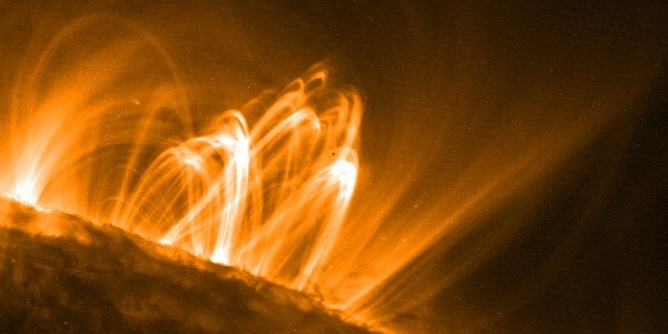Dundee University researchers have moved a step closer to understanding how the Sun works.
The team from the school of engineering, physics and mathematics say they have made a breakthrough in the study of magnetic fields.
Unlike the orderly field that surrounds the Earth, the Sun’s magnetic field is tangled up or “braided.”
Now, using computer simulations, the Dundee researchers have uncovered new rules that make the Sun’s chaotic behaviour more predictable.
Dr Gunnar Hornig, one of the authors of the university’s scientific paper on the subject, said, “Using these computer simulations, we have studied braided magnetic fields and made a significant advance in understanding how they evolve over time.
“If you take a twig and twist it, then at some point it starts to break and the individual fibres break up. Something similar happens to these magnetic fields.
“Where it differs is that the evolutions (computer simulations) we have been studying allow the broken fields to combine to form new structures.”
Tangled magnetic fields have more energy than ordered fields but scientists have long puzzled over why.
Dundee’s “magnetohydro-dynamics” team hope their discovery will provide greater insights into how the energy is released.
Team member Dr Anthony Yeates added, “This is fundamental research — part of the theory of astrophysical plasmas.
“It forms part of our attempts to understand how stars work, which enhances our understanding of how our own Sun evolves and how it affects the climate and life on Earth.”
The team’s research has been published in the latest edition of Physical Review Letters as a paper entitled ‘Topological constraints on magnetic relaxation’.
The ongoing research project started last October and is funded by the Science and Technology Facilities Council.
